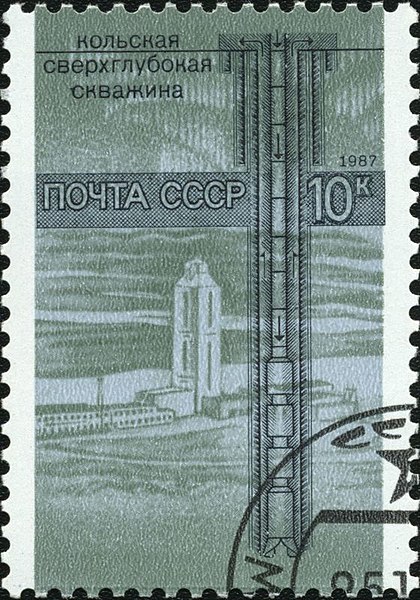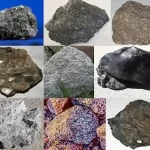The Kola Superdeep Borehole is the result of a scientific drilling project of the Soviet Union in the Pechengsky District, on the Kola Peninsula. The project attempted to drill as deep as possible into the Earth’s crust. Drilling began on May 24th, 1970.
Boreholes were drilled by branching from a central hole. The deepest, SG-3, reached 12,262 metres (40,230 ft; 7,619 mi) in 1989 and is the deepest artificial point on Earth.
The project ended in 1995 due to the dissolution of the Soviet Union and the site has since been abandoned. The ruins of the site, however, are frequently visited by curious sightseers.
Drilling

The main target depth was set at 15,000 m (49,000 ft). On June 6th 1979, the world depth record held by the Bertha Roger’s hole in Washita County, Oklahoma, United States, at 9,583 m (31,440 ft) was broken.
In 1983, the drill passed 12,000 m (39,000 ft), and drilling was stopped for about a year for numerous scientific and celebratory visits to the site.
The hole reached 12,262 m (40,230 ft) in 1989. In that year, the hole depth was expected to reach 13,500 m (44,300 ft) by the end of 1990 and 15,000 m (49,000 ft) by 1993. Because of higher-than-expected temperatures at this depth and location, 180 °C (356 °F), instead of the expected 100 °C (212 °F), drilling deeper was deemed unfeasible and the drilling was stopped in 1992.
Research

The Kola borehole penetrated about a third of the way through the Baltic Shield continental crust, estimated to be around 35 kilometres (22 miles) deep, reaching Archaean rocks at the bottom. The project has been a site of extensive geophysical studies.
Microscopic plankton fossils were found 6 kilometers (4 mi) below the surface.
Another unexpected discovery was a large quantity of hydrogen gas. The mud that flowed out of the hole was described as “boiling” with hydrogen.







